At a distance, students begin moving back
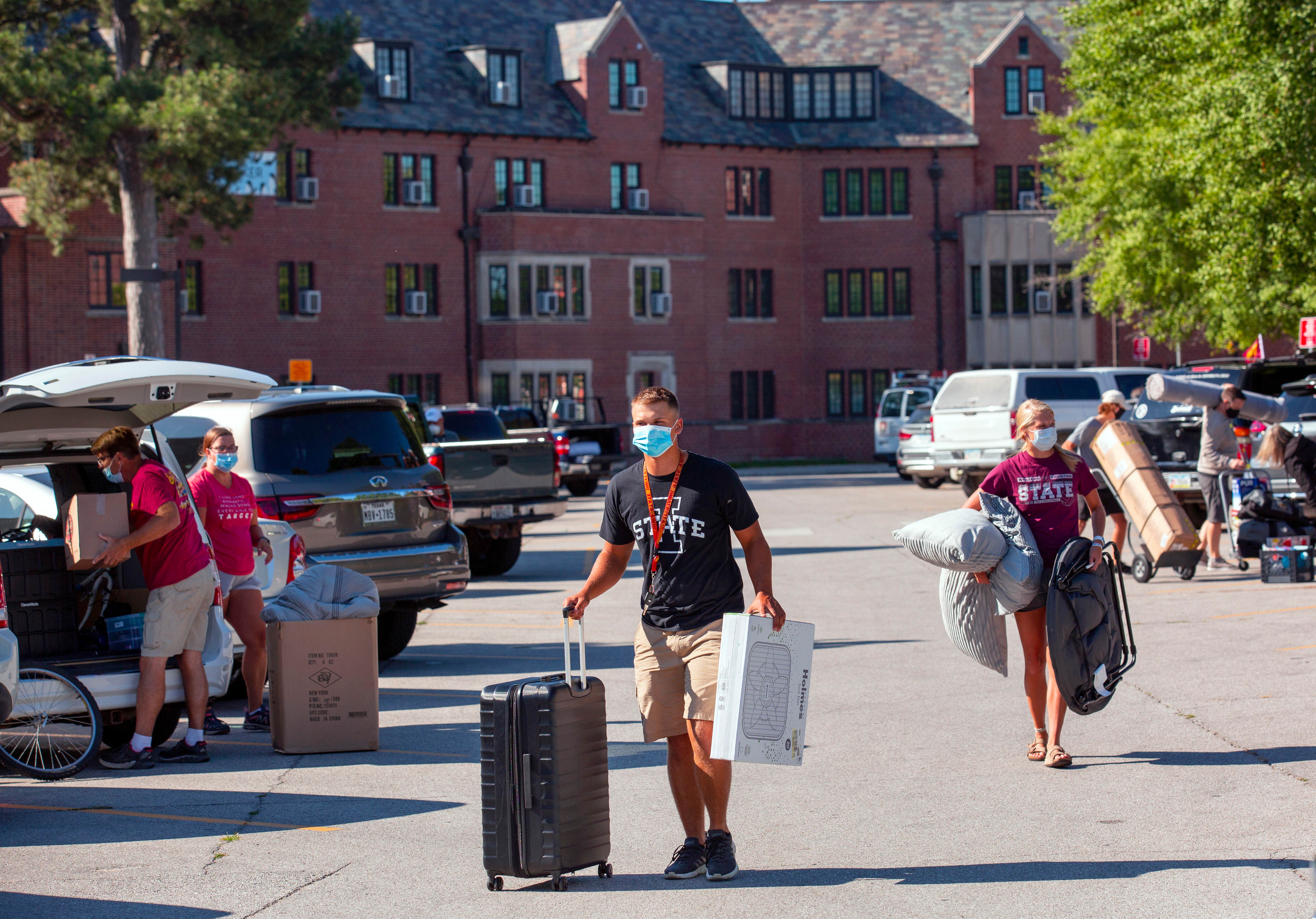
Students move into Friley Hall on Aug. 3. Photos by Christopher Gannon.
Stretching over two weeks a process that usually takes two days, following a schedule that limits crowds and allows for physical distancing, Iowa State students living on-campus began moving in this week. The first stop for more than 9,000 students living in university housing is the Lied Rec Center, where they're tested for coronavirus as part of the check-in.
Help from employees is needed to support the testing and check-in process. Roles range from welcoming and registering students to performing temperature and symptom checks. Faculty, staff and student employees interested in assisting must first get approval from their supervisor before completing the online sign-up form. The form includes more detail about the various roles and what is required for each.
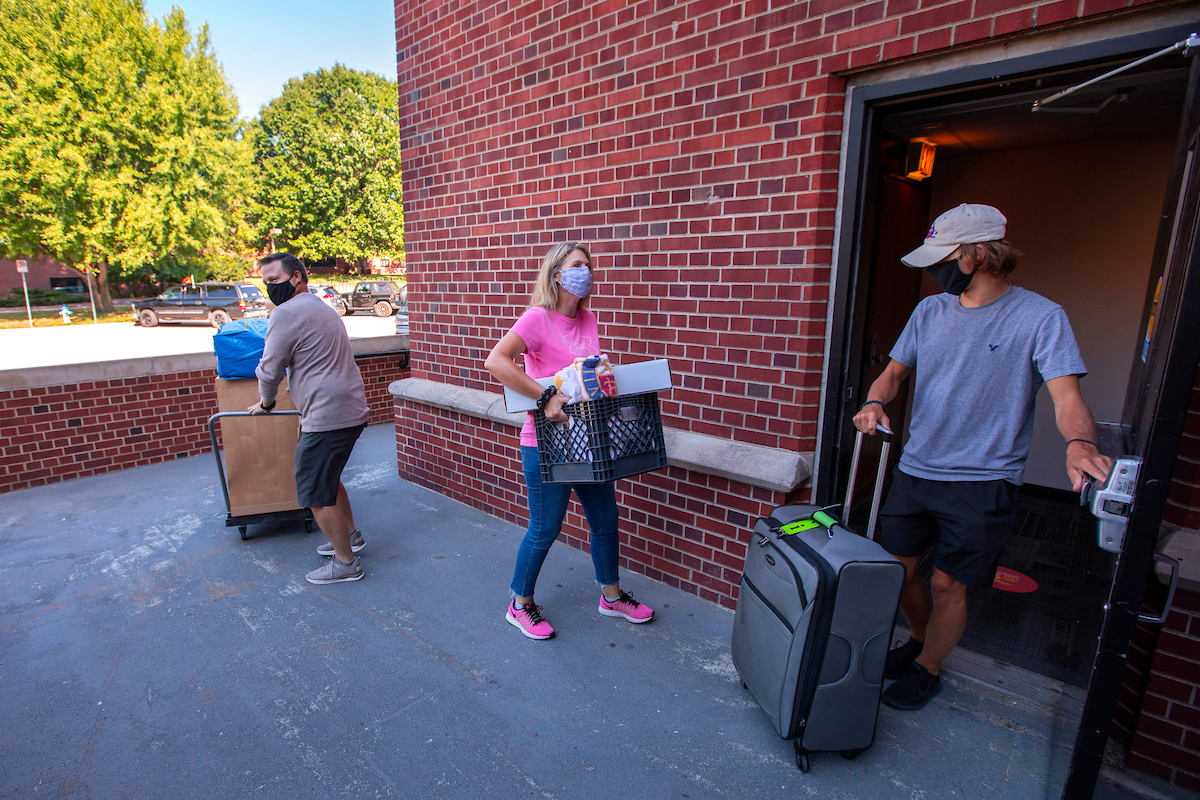
Incoming freshman Ryan Ingstad of Lakeville, Minn., leads his parents, Shannon and Keith while moving his items into Friley Hall on Aug. 3.
Cloth face coverings always required indoors, with few exceptions
24/7 help soon available
Beginning Aug. 11, faculty and staff can call the 24/7 COVID-19 response team helpline at 800-447-1985 to request assistance, report a problem or share a solution. More details about the teams and additional contacts are available on the response team webpage.
An update to the university's policy on wearing face coverings to limit the spread of coronavirus clarified that a cloth face covering, preferred instead of a face shield, is required in university buildings with few exceptions. It also is required outdoors on campus anywhere distancing may be difficult.
President Wendy Wintersteen announced the revised policy in an Aug. 5 message to the campus community. Previously, a cloth face covering or face shield was required when physical distancing of 6 feet could not be maintained. She noted university leaders are basing their responses to the COVID-19 pandemic on the best public health and science-based guidance available, which requires ongoing adaptations.
Instructors may use a face shield instead of a cloth face covering if they can stay 8 feet from students during the entire class period. A face shield also may be approved as an accommodation for employees or students who can't wear a cloth face covering for verified medical reasons. Students should contact student accessibility services and employees should contact university human resources to seek a waiver that allows wearing a face shield.
As updated, Iowa State policy requires everyone -- including on-site visitors, vendors and contractors -- to wear a cloth face covering in all indoor spaces on campus. Exceptions include:
- Employees in a workspace where they can keep 6 feet away from other people
- Students working or spending time in a study area, workspace, office or other area on campus where they can stay 6 feet away from others
- While eating or drinking at university dining facilities
- Residents of on-campus housing while in their assigned room, though face coverings must be worn in all common areas of residence halls
- While participating in physical activities, athletic practices/events or classes that require exercise
A cloth face covering is required outdoors anywhere other people may be present and keeping 6 feet of distance is not possible, including parking lots, sidewalks, bus stops and outdoor gathering areas.
Face coverings shouldn't be a source of division on campus, and reminding others of the policy should be approached with kindness, Wintersteen said. Guidance is available for responding to instances of noncompliance.
Deliberate repeated violations of the policy could lead to disciplinary actions. Compliance is a condition of in-person enrollment for students and a condition of employment for faculty and staff, according to the revised policy.
More fall details shared in town hall as semester nears
There's no way to overstate how enormous of a job it has been to prepare for resuming in-person instruction and on-campus living as safely as possible this fall, President Wendy Wintersteen told employees last week during a virtual town hall.
"Iowa State's response to the COVID-19 pandemic, including our planning and preparations for the fall semester, is the most massive and multipronged and complex undertaking in university history," she said.
Wintersteen thanked employees for their contributions to the effort at the start of the July 30 town hall, the fourth online forum for faculty and staff since the COVID-19 pandemic began. During the 90-minute session, a half-hour longer than the prior town halls, senior leaders outlined new specifics about the university's fall plans. Here are some highlights.
No 'line in the sand'
Iowa State begins the semester at medium density. Classrooms, residence halls and other facilities are in use, but many courses and services will be online and classroom capacities are limited to 50%. There are no specific statistical thresholds that would trigger a change in those plans, said vice president for extension and outreach John Lawrence, chair of the fall planning committee. There's no "line in the sand," he said.
While campuswide action is possible, the goal is to pinpoint areas to intervene and stop disease spread. Plans for different types of university units are being developed with customized indicators and responses, said Kristen Obbink, public health coordinator.
"We'll make all attempts to mitigate anything we can at the local level so that we can have the biggest impact on public health and the least amount of impact on our university operations as a whole," she said.
Indicators under consideration that could drive decision-making on the local or university levels include availability of quarantine and isolation space for students, cases per instructor or building, and the increasing rate of cases.
Scope of testing
With the Veterinary Diagnostic Laboratory processing COVID-19 tests within 24 hours, the university will receive results faster than many health providers. That's an important advantage as about 9,000 students living in university housing are tested while moving in, a process stretched over two weeks to thin crowds and promote physical distancing.
Testing after the move-in period will focus on individuals who have coronavirus symptoms or a known exposure to someone who tested positive. Students, faculty and staff can receive free testing at the Thielen Student Health Center. Employees should fill out an assessment to seek a test at the student health center. They also are asked to report third-party positive tests. Symptom checker software also will help identify people who should be tested.
More expansive testing options were considered, but the availability of testing supplies and the logistics of test collection are constraints, said interim senior vice president for student affairs Erin Baldwin, who also is director of the Thielen Student Health Center.
"We're going to continue to evolve our testing strategy as the supply chain opens up," she said.
University leaders are supportive of city and county officials’ efforts to urge the state to establish a Test Iowa site in Ames, allowing free tests for people without symptoms or known exposures.
Sharing information
Those who have a confirmed case of coronavirus will remain anonymous, but some information about testing will be shared.
Current plans call for posting online a weekly update on tests conducted and positive cases confirmed, numbers that will be included in Story County’s overall statistics. When a student tests positive, classmates who were in close proximity, instructors and department chairs will be notified by email. Supervisors will be notified if an employee tests positive. Custodial teams will be informed about facilities that need cleaning following a positive test.
Case management investigators will interview people who test positive to compile a list of close contacts for tracing and to provide isolation guidance. The public health team Obbink is leading, which includes 50 university employees trained as contact tracers, will work to notify people who were, for 15 minutes or more, within 6 feet of the person who tested positive. People who were exposed will be asked to quarantine and the case management team will check with them daily.
An Aug. 4 memo from the public health team and the academic continuity working group outlines how the process will work when a student tests positive. Cooperating with contact tracing and following quarantine and isolation guidance will be essential.
"Our strategy is really centered around identifying and quickly isolating cases on campus," Baldwin said.
Coverings are key
The Cyclones Care campaign provides widespread coordinated messaging supporting staying home when sick, as well as keeping 6 feet from others, washing your hands often and wearing a face covering.
Asymptomatic cases heighten the impact of wearing face coverings, as they help slow disease spread by people who don't have symptoms, Lawrence said. With few exceptions, cloth face coverings must be worn inside university buildings and outside on campus when in the presence of others, a policy updated Aug. 5.
Though classroom density will be reduced, 6 feet of distance between each student won't be available in most rooms. The combination of lower capacity and face coverings allows for in-person classes in 64 general university classrooms that can hold more than 30 students, Lawrence said. At the density needed for 6-foot distancing, only 14 general classrooms of that size would have been available.
Also, some facilities lack forced-air heating and cooling, making face coverings especially essential. In 14 campus buildings -- Gilman, Coover, East and Science halls, among others -- there are areas without forced-air ventilation. No fall courses were scheduled in general university classrooms in affected sections of those buildings, and department and unit leaders were notified, Lawrence said. The areas are safe to work in with proper distancing and with occupants wearing face coverings, he said. Smaller classrooms out of service due to capacity limits could serve as temporary office spaces in some situations.
The university is providing up to two face coverings to every student and employee. Students who live on campus will begin receiving face coverings during the move-in process. Plans are underway to distribute more student face coverings on central campus at the start of the semester.
"Last fall we were handing out apples and bananas. This fall, we envision handing out face coverings," Lawrence said.
Mindfulness pedagogy series aims for balance in unsteady time
Instructors are busy putting final touches on their courses in preparation for the fall semester, and many are looking to add something not found in a textbook or PowerPoint slide.
With the stress and demands of the coronavirus pandemic, mindfulness in the classroom and through virtual instruction is finding its way into more plans. Mindfulness -- the practice of maintaining a nonjudgmental state of awareness -- is beneficial for instructors and students.
The Center for Excellence in Learning and Teaching (CELT) has responded by offering a mindfulness and contemplative pedagogy series. The three-part series is designed to help instructors and students incorporate deepened awareness, concentration and insight into their daily lives.
"There was a huge need to help instructors and students dealing with the challenges presented by COVID-19 by encouraging student engagement and community connection," CELT program coordinator Karen Couves said.
Making the connection
The series begins Tuesday, Aug. 11, with a live webinar, “Explore the Benefits of Mindfulness in Online Learning.” Through a video, a student will share what she gained from having her instructor incorporate mindfulness techniques. Carrie Giese, prevention and health promotion coordinator in student wellness, will discuss the benefits of meditation and mindfulness practices to optimize the learning environment.
An online panel featuring mindful and contemplative pedagogy practitioners is set for Sept. 9. Food science and human nutrition associate professor Christina Campbell, English associate teaching professor Brenna Dixon, and food science and human nutrition clinical professor Janet Johnson will talk about the benefits of the practices they incorporate.
On Oct. 16, the "'You Already Are:' Mindfulness in Different Disciplines” workshop will show how mindfulness can be present across every discipline. Dixon and psychology teaching professor Karen Scheel will lead the discussion.
"It is about building community and connection using mindfulness for everyone on campus," Couves said.
Building to a series
CELT began mindfulness programming in February, and it took hold in April when Couves and fellow program coordinator Karen Bovenmyer conducted a workshop on mindfulness in an online environment. Another session in July saw CELT partner with student wellness to see how students were impacted when instructors used mindfulness techniques in their classes.
"We were able to hear student voices and what they thought," Couves said. "We showcased a variety of exercises that could be done beyond just breathing exercises and breathing meditations."
"A lot of faculty were already doing mindfulness techniques in their classrooms that they didn't realize," Bovenmyer said. "Things like centering each class around a specific theme question to think about throughout that entire class."
Studies find that mindfulness can enhance focus and creativity, provide improved stress management and coping skills, and lead to a better work/life balance.
More possibilities
CELT added a webpage offering suggestions and other resources of information about mindful and contemplative pedagogy.
The series will extend into spring semester with the opportunity to grow as topics and needs arise, Couves said.
"I think people are looking for ways to bring balance to their lives and how to be more at peace by taking a moment for themselves," Couves said. "Faculty, staff, undergraduates and graduate students can all benefit from this."
Faculty share ideas for fostering interaction in online classes
For more information
Want to know more about improving interactions with students online and in-person? On Aug. 13, check out the Center for Excellence in Learning and Teaching webinar on best practices for effective and meaningful interactions.
Online teaching will be much more prevalent this fall than it was before the coronavirus. With time to prepare, faculty can be more deliberate in their efforts to help students flourish and learn in online courses. Ensuring interaction between students and instructors, an advantage of a class physically meeting, is an important focus.
A memo from the provost's office last month provided some examples of teaching methods that constitute "substantive and regular interaction," a requirement under U.S. Department of Education guidelines -- at least an hour per week for every credit hour. Faculty reflecting on their experiences in the spring and thinking about the fall shared some ideas with Inside Iowa State this summer about how to foster two-way communication with students.
Discussion, reflection and intros
Racheal Ruble had taught online classes before, but the associate teaching professor of psychology in the communication studies program had a challenge this spring that wasn't an issue previously.
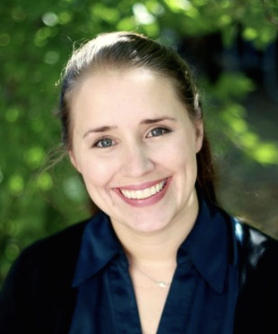
Racheal Ruble
"The biggest hurdle for me was that I live out in a rural area and don't have access to continuous internet. I needed to think about that for my students as well," she said.
With that in mind, Ruble's interaction with students was mostly asynchronous, meaning students could engage with learning activities when able. She posted her classroom slides and recorded lecture videos, and students applied what they learned in static small groups, exchanging comments in an online discussion thread. Ruble would monitor the threads to answer questions and make sure students grasped the concepts.
For topics that wouldn't work well for groups, she'd ask students to write a reflection of four to five sentences. She provided feedback on each reflection, though with three courses of 35-40 students per class her comments often would be based on a basic template. The goal was to confirm that students considered and understood the material.
"In class, I'd assume they're doing that as they're listening to the lecture. It gives me an opportunity to see where they're at and where they're struggling," she said.
Another technique that worked well was short announcement videos posted with lectures, a separate recording of 10 minutes or less. Ruble recapped what the class was working on, outlined objectives and assignments for the week, and answered questions. Students welcomed the announcement videos, which she thinks of as similar to the first several minutes of an in-person class period.
"I teach communications classes. They appreciate talking through examples from fellow students," she said.
Pedagogy of care
As a scholar who studies online classes and teaches courses on learning technology, Evrim Baran, an associate professor in the School of Education, was well-prepared to take her three courses online this spring. But emotionally, the uncertainty of the transition was difficult for her students, and for her.
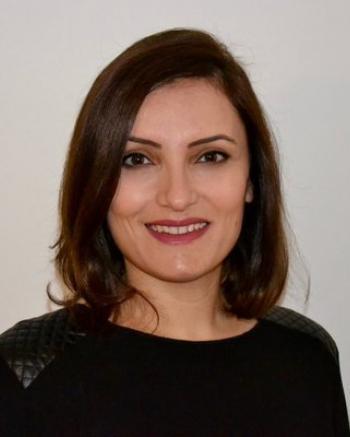
Evrim Baran
It helped to adopt what she calls a "pedagogy of care," an approach that considers individual needs of students. She met one-on-one with students and held group discussions before spring break to ease concerns and collectively identify what interactions would work best.
She reduced the frequency of live class sessions, added collaborative exercises such as online discussion threads with frequent feedback and updated projects that incorporated the COVID-19 crisis to make material relevant. Asynchronous methods common in online learning environments have benefits beyond addressing access issues, Baran said.
"You can do things online you can't do face-to-face. Students are more prone to sharing personal things in an online class. They can think, write and then post. It's not immediate and gives them time and space to reflect," she said. "There are more equal opportunities to participate. In an online discussion, every student writes a response."
The downside is losing the community of an in-person classroom, and Baran said she worked to build that up as much as possible, offering social chat forums for students to connect. Recorded video also can create presence online, which is why she sends out weekly "agenda" videos for online courses and has students record introductory videos.
Going forward, Baran said more preparation is needed so faculty can adjust better to abrupt shifts online. Hybrid-flexible course design, for instance, includes plans for in-person, online and blended hybrid instruction, giving students the choice of how to complete learning objectives.
"I think there will be more and more work in that area," she said.
Making teams work
As part of the Center for Excellence in Learning and Teaching (CELT) preparing future faculty program, which provides graduate students and postdocs teaching training and practice, Clark Coffman was co-teaching a spring class of about 50 with CELT program coordinator Karen Bovenmyer. It's designed on team-based learning concepts, where purposefully selected teams work together during class time. The teams stay the same throughout the semester, and the group problem-solving is crucial, said Coffman, a part-time CELT faculty fellow and associate professor of genetics, development and cell biology.

Clark Coffman
When the course shifted online, breakout rooms in Zoom allowed those teams to maintain instantaneous exchanges. To shape the discussions when the class reconvened as a whole, Coffman needed a sense of what the groups had been talking about. But popping in a virtual breakout room tended to chill discussion. The solution was having groups share an interactive document, such as Microsoft Word online via CyBox. Watching those documents, instructors can monitor group work without impacting it.
"That was our way of eavesdropping. It was really handy," he said.
The method could work for bigger courses, too. Coffman has heard of faculty using it on classes as large as 150. With multiple instructors, it may work with even larger sections, he said.
"It's going to take some creative approaches to make things work in large-format classes," he said.
Coffman said he's pondering how to build team-based learning communities online from scratch, which he suspects will be more difficult than when groups have a head start in forming a community in-person. He's been interested in hearing what colleagues are planning.
"In what ways can we make it so you have a sense of who I am and I have a sense of who you are in groups?" he said. "There's no single answer. Not doing this by yourself is the key."
A combination of connections
The students in the six-credit interdisciplinary design studio Alenka Poplin taught in the spring were scheduled to take a spring break tip to Vienna.
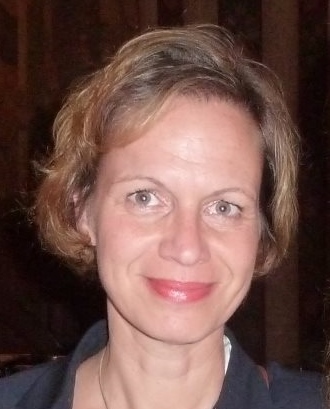
Alenka Poplin
"You can not replace a trip to Vienna in any way," said Poplin, an assistant professor of community and regional planning.
But in an intensive studio class, there is much else to replace.
"The concept of a studio is to meet in class. It's built for interaction, being in the class and working together," Poplin said.
It took a wide variety of interactions to fill the gap. The 10-student class, which chose to focus on sustainable mobility and smart cities, collaborated with students from the University of Applied Sciences Technikum Wien in Vienna to incorporate the perspective lost when the trip was canceled and reconnected virtually with local experts who spoke to the class in person earlier in the semester.
The class continued to meet in virtual synchronous sessions, albeit less often. Poplin conducted one-on-one videoconference consultations, conversations that at first ranged far beyond their projects. Though it wasn't for any form of evaluation, classmates and Poplin used a group texting app to connect informally -- whether it was lamenting where they'd be in Austria on that day or seeking Photoshop tips.
"I think a combination works best," she said. "I made myself very available to them. They knew they could reach out whenever they wanted."
Welcome
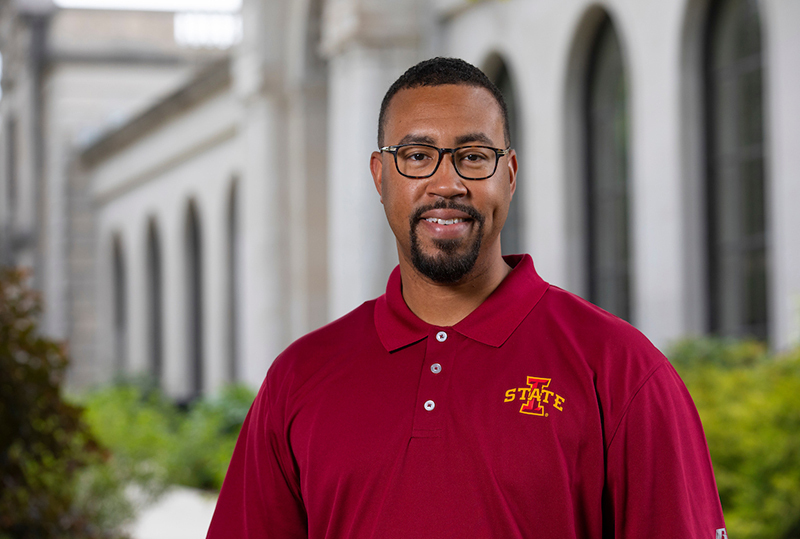
Photo by Christopher Gannon.
Gerard Tate became director of Iowa State's veterans center on June 29. He is just the second director of the center, which opened in 2012.
He comes to Ames from Washington, D.C., where he spent about 20 months in the city administrator's office focusing on program and policy assessment, coalition building and employee and citizen training aimed at reducing and preventing violent crime. He also worked as a social worker in transition and care management for the U.S. Department of Veteran Affairs, St. Louis (2018) and administrator of the support services division (community outreach, violence prevention) in the Marysville, California, police department (2017-18).
Tate is a U.S. Army veteran who served as a military police officer and criminal investigator for more than 10 years (2003-13) in the U.S., Iraq, Italy, Japan and South Korea.
He earned a bachelor's degree in criminology at Webster University, St. Louis, a master's degree in social work from Washington University in St. Louis and is completing a doctoral degree in social work this summer from the University of Southern California.
Tate's office is in 3540 Memorial Union. His phone is 294-9801, his email is gtate@iastate.edu.
CELT continues to aid faculty, staff with online programing
Summer is usually a time when things slow down on campus, but there was little of that this year for the Center for Excellence in Learning and Teaching (CELT), as it played a key role in improving online instruction and learning.
CELT provided virtual programming throughout the summer to aid faculty and staff on issues, ranging from online course essentials to navigating controversial topics in the classroom. Programming continues to ramp up in preparation for the Aug. 17 start of the fall semester.
The following are four virtual programs that can help prepare and improve online instruction:
The condensed course design clinic
Aug. 11, 8 a.m.-12:15 p.m.
This one-day, four-hour clinic is a faster-paced version of the summer course design institute normally conducted in-person over four days. The online clinic focuses on course planning, building a student-centered course in Canvas, active engagement strategies, learning assessment techniques, designing a learner-centered syllabus and implementing accessibility.
The objective is not to completely redesign a course, but to target three or four elements for improvement.
"It is a lot of learning from each other --not just talking to instructional designers and people at CELT," program coordinator Lesya Hassall said. "It is exposure to new ways to develop your course."
The clinic has a self-guided element for design and development of courses. Instructors can request additional guidance in setting up online courses through individual or group consultations with CELT by emailing celt@iastate.edu.
Synchronous communication tools
Weekly, various times
The webinar began this week, but CELT has provided Webex, Zoom and Microsoft Teams training since the transition to online instruction last spring. The training covers ways to interact and engage effectively with students, and provides an overview of different online tools (Webex, Zoom and Teams) and their appropriate use. Tips for improving the student experience also are shared.
"We focus on everything from accessibility to camera placement, sound, lighting and background," CELT learning technologies coordinator Amy Ward said. "It is all about removing distractions. We don't want instructors to have to think about tools, distractions and lighting while they are teaching, we want them to be able to focus on the content."
Upon completion of the 50-minute presentation, participants receive a recap with links to resources.
Teaching large enrollment courses online
Sept. 8, Oct. 6 and Nov. 3, 3:10-4 p.m.
This introduction to the Teaching Large Classes Online Community is for faculty and staff who teach classes with more than 60 students. It allows them to learn from others as they talk about instructional strategies, testing, tools and technologies.
The learning community came out of a summer session held by CELT to address areas of interest raised by faculty. The online meetings are designed to address issues of the moment as instructors develop best practices for large-group online instruction.
"This is something we wanted to do for a couple of years," Ward said. "It will really benefit those instructors who have classes with more than 60 students."
Refection, retooling and renewal: Strengthen your ability to be a more effective graduate student mentor
Sept. 11, 18, 25, 1:30-3:30 p.m.
The online, three-part series focuses on faculty mentoring experiences in graduate school, the different mentoring models across campus and core building blocks of a mentoring philosophy. Margaret Ellen White Award winners will lead one session, discussing mentoring approaches in different departments and colleges.
"We will have breakout discussions about how they cultivated their mentoring philosophies, what were some of their defining moments and what they learned from some of their most challenging students," assistant provost for faculty development Tera Jordan said.
Director of student counseling services Chris Hanes will lead a discussion on graduate student well-being, cultivating trust and psychological safety.
"Our mission is to create, share and apply knowledge to make Iowa and the world a better place, so excellence in graduate mentoring is really key for furthering the institutional mission and strategic goals around access to the Iowa State experience," Jordan said.
A reimagined Destination Iowa State awaits incoming class
New undergraduates will get the typical whirlwind mix of campus know-how, academic tips, connections with classmates and Cyclone celebration at this year's Destination Iowa State, despite some revisions needed for an atypical fall. The program will be held Aug. 13-15.
Retaining the core aspects of the program to welcome and ease the transition of freshmen and transfer students was the focus as admissions staff considered what it would look like in an environment where large indoor gatherings are off the table due to COVID-19 concerns, said Sarah Merrill, new student programs director.
"We feel really confident that we will be able to provide a meaningful experience and one that supports the university's health and safety guidelines," Merrill said.
The solution in many cases is careful scheduling. Destination Iowa State participants will be assembled in groups of up to 75, with a Cyclone Aide as a leader. Events that draw crowds -- activities at the Memorial Union or breakfast on central campus, for instance -- will be held over longer time periods, with groups set for certain times to assure capacity limits are met and distancing is possible. Face coverings are required during all Destination Iowa State events.
"Everyone gets to participate, but fewer are participating at any one time," Merill said.
The kickoff rally will be virtual, with prerecorded messages from President Wendy Wintersteen, university leaders and faculty. As always, students will have a chance to learn the fight song. Other virtual additions include video meet-ups Cyclone Aides have held with their groups since mid-July and a recorded faculty presentation on how to succeed in the classroom.
Some new events were added. A mobile app-based scavenger hunt will acclimate newcomers to campus, and on Aug. 14, in partnership with the Student Union Board and the athletics department, registered participants can watch a movie on the video board at Jack Trice Stadium. Doors open at 8 p.m. for an 8:30 p.m. showing of "Spider-Man: Into the Spider-Verse."
Usually, about 80% of incoming new students sign up for Destination Iowa State, but it's unclear how the pandemic will affect participation rates, Merrill said.
"We don't know if it will be up because students are looking for more opportunities to connect or if it will be a little bit less because they're exercising caution," she said. "Either way, we extend all our newest Cyclones a warm welcome to Iowa State University."
